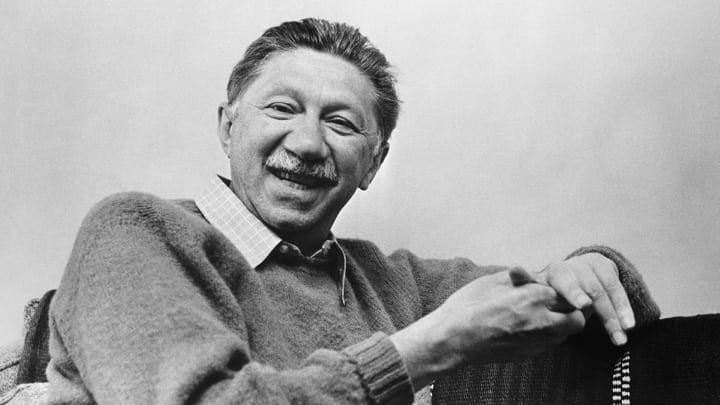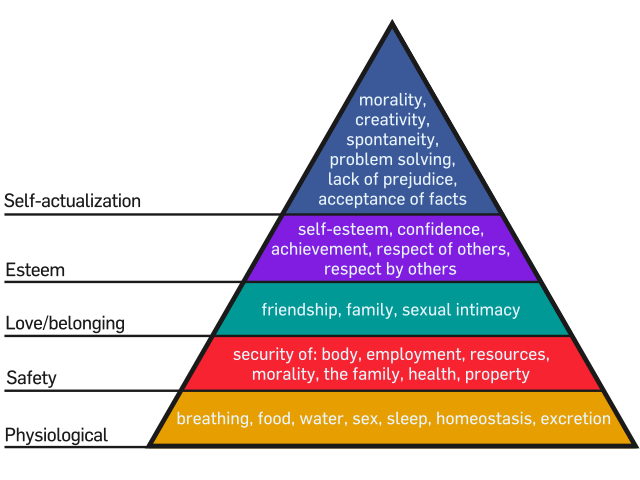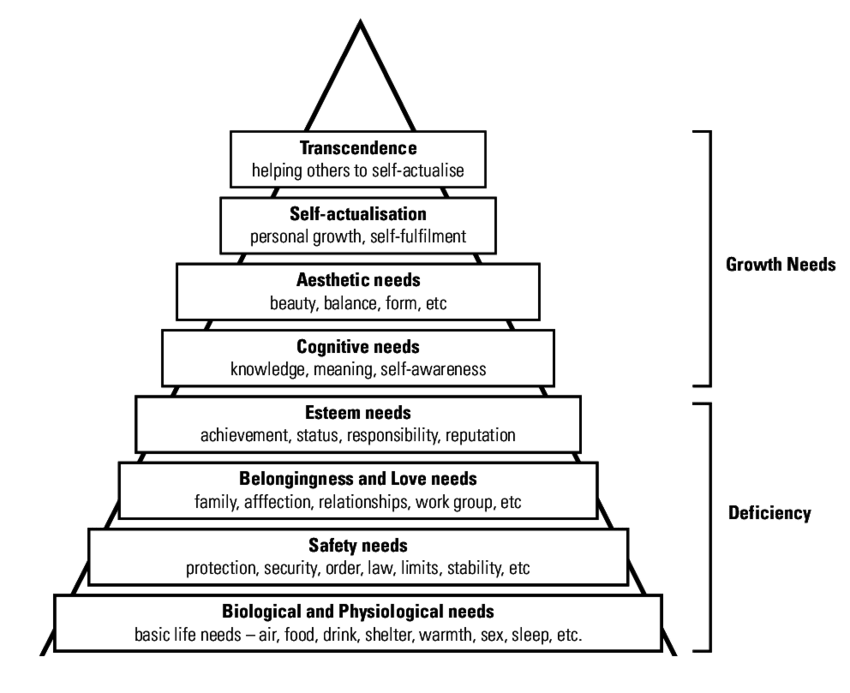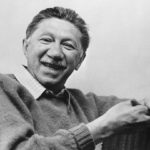Abraham Maslow’s hierarchy of needs is one of the most well known, referred to, and well-recognized theories of motivation in psychology.
Often referred to as the Maslow’s Pyramid of Needs or the Maslow’s Theory of Motivation, it has been used by marketers to understand consumer behavior, by psychologists to decipher why humans behave a certain way and by social scientists to find answers to how societies evolve.
Maslow was of the opinion that human needs are structured in a sequential order or a hierarchy. This essentially meant that people in different stages of their lives have different need-states.
Over the years, Abraham Maslow, psychology of human needs, and theory of motivation have become synonymous.
Table of Contents
Quick Summary: Maslow’s Hierarchy of Needs
- Maslow studied the positive side of human psychology, to uncover what motivates humans, and how can they fulfill their full potential
- Initially, Maslow organized humans needs in 5 sequential clusters: Physiological Needs, Safety Needs, Belonging Needs, Esteem Needs, Self-Actualization Needs. This framework is known as the Original Hierarchy of Needs Pyramid
- Later, Maslow expanded his theory, by adding Cognitive Needs, Aesthetic Needs and Self-Transcendence to the top of his pyramid
- According to Maslow’s theory of motivation, the lower needs (or the deficiency needs) should be met first, before a person can focus on higher levels of needs (or growth needs)
- Despite the above, Maslow clarified later, that the order of fulfilling these needs is not rigid – and that people can focus on different order of needs because internal and external circumstances differ for individuals
- Maslow’s critics primarily differ with his methodology, and feel his outcomes are biased and not scientifically backed
Who Was Abraham Maslow?
If you don’t know who Maslow was, you’ve been living under a rock. Abraham Maslow was a psychologist, known for his tremendous contributions towards understanding human psychology of needs.
One would assume that Maslow had a good and uplifting early childhood, but unfortunately, that’s not how it was. In fact his dedication to understanding what motivates human behaviour was deeply rooted in his disturbed upbringing.
His parents did not get along well, and his father was never available for the family, both personally or emotionally. As a Jew, he lived in a non-Jewish community and was isolated throughout his early life. He is also reported to have quit a law school that he joined on academic probation.
However, with some turn of events, and experiences that we went through, his life changed direction, He is eventually known to have found a meaningful purpose in life that instilled a sense of optimism and a drive to accomplish.
This new found energy and purpose led him to accomplish what he had achieved as a renowned psychologist.

Abraham Maslow
Unlike other psychologists (e.g. Sigmund Freud) who tried to answer what makes people unhappy and demotivated, Abraham Maslow was one of the first few psychologists, who went far down the path of trying to understand what makes people happy and what motivates them.
He focused his energies and made it his life’s mission to identify what drives positive qualities in people. He is known as a known as 10th most cited psychologists of the 20th century in the Review of General Psychology survey.
What is Maslow’s Hierarchy of Needs?
You won’t find a Maslow’s Hierarchy of Needs definition on the internet, because this isn’t a phrase. It is a theory of motivation in psychology, put together by the famous psychologist Abraham Maslow.
It is a triangular framework of motivational theory, that illustrates the path of humans needs from the most basic survival needs to the fulfillment of self-actualization needs.
Maslow’s Hierarchy of Needs Explained (Video)
Maslow wanted to find out what motivates people. He formulated and simplified his findings in the form of a pyramid (Maslow’s triangle), displaying that humans are driven to accomplish their instinctive needs in a sequential order. It is a linear model of needs, where some needs take precedence, while higher needs are deprioritized until each layer of need is achieved.
Abraham Maslow, Psychology of Human Needs, Theory of Motivation
Suggested by Maslow, needs can be categorized into 3 types: Basic Needs, Psychological Needs, and Self-Fulfillment Needs. The Basic Needs and the Physiological Needs combined make up the first 4 levels of Maslow’s 5-stage triangle of needs. These are called the deficiency needs (also referred to as D-Needs).
The fifth and the final stage, which lies at the very top of Maslow’s hierarchy of needs pyramid, is the need for being, or growth. This is when people have achieved pretty much everything, and when no material need motivates them. This last stage is also referred to as the being or growth needs (B-Needs).
Maslow’s Hierarchy of Needs Chart
Here is the original Maslow’s hierarchy of needs chart – I remember studying this back in grad school years ago. This was an interesting chart for us to refer to when trying to understand consumer psychology from a business and marketing perspective.

Maslow’s Hierarchy of Needs Chart
Maslow’s Deficiency Needs (D-Needs)
According to Maslow’s hierarchy of needs (1943, 1954), people’s most basic need is the need to physically survive. Known as the physiological needs, identified by Maslow’s psychology endeavors, these are a group of the most basic needs that any person needs to survive. Things like food, water, shelter, etc. that people need to stay alive fall under physiological needs.
When a person doesn’t have these basic necessities, he/she will not be motivated by anything else except these survival essentials.
4 Stages of D-Needs
Physiological needs are a part of the Basic Needs group according to Maslow’s theory of needs. Once physiological needs are provided, people get motivated by the needs identified in the next stage: Safety Needs.
Safety Needs are also a part of the Basic Needs group on the Maslow’s motivation model, and cover needs like feeling safe and secure. Both physiological and safety needs make up the base of Maslow’s pyramid of needs (Basic Needs), and are essential requirements of any human being to be able to want or get motivated by higher things in life.
The need for belonging follows next in Maslow’s pyramid, and falls under the 2nd type of need: Physiological Needs. When people are well fed, well dressed, live in a reasonable home, feel sheltered and secure from any threats, they feel the need to be loved and belonged. This is a stage where friends, relationships, and love become important to people.
Another type of Physiological Need identified by Maslow’s five-stage model of motivation is Esteem Needs. People with no to low self-esteem, or with self-esteem problems are often at this stage of Maslow’s hierarchy of needs.
At this stage, people seek to be respected, they want to feel accomplished, and they want to feel pride in what they have achieved. If you are seeking to be respected for the work you have done, or are motivated when you get a recognition email from your CEO, you are fulfilling your Esteem Needs.
These 4 stages – Physiological Needs, Safety Needs, Needs for Belonging, and Esteem Needs – are the deficiency needs. They are known to arise when people are deprived of them. When people unmet deficiency needs, they are thought to be motivated by them.
Are D-Needs Sequential?
Furthermore, the motivation to achieve these needs will become stronger, the longer they remain unmet. In other words, deprivation will lead to desperation. Imagine a homeless person, sitting in the street in winters. The longer that person remains on the streets, the more desperate he/she will get to find a shelter for protection.
Similarly, a person without food can only go on without eating for so long. The hungrier they get, the more agitated, desperate and motivated they will become to get (or work for) food.
When each stage of deficiency needs is fulfilled, people habitually or instinctively incline towards achieving higher levels of needs from the Maslow’s pyramid. This higher set of needs then gains priority or salience in driving motivation individuals.
Maslow’s Growth Needs (B-Needs)
Growth needs, or B-Needs, are deeply rooted in the desire to progress in life. The progress to achieve more or better in every aspect of life – material and non-material needs. Once an individual achieves everything that he/she had desired for, they are set to reach the highest level of Maslow’s hierarchy of needs pyramid – known as the self-actualization stage.
However, life is not linear. People keep moving between different levels of this hierarchy of needs due to various other factors including a loss of some kind – health issues, family break-ups, relationship problems, a death of someone close, trauma. Other fortunate and unfortunate events in life could potentially include financial losses or gains, meeting new people, etc.
For these reasons and more, people are expected to move through (higher or lower) different levels of needs hierarchy that Maslow identified. Hence, reaching a stage of self-actualization is never possible for the majority.
Maslow’s Original Hierarchy of Needs: 5-Stage Model
As described above, Maslow’s initial hierarchy of needs was comprised of 5 stages:
1. Biological and Physiological Needs
Being able to survive biologically and physiologically: breathing, nourishment, being covered/clothed, moderate temperature (warmth in winters, shelter in extremely hot days in summers), a house, or a place to live, and instinctive needs like being able to sleep, or mate with a partner.
2. Safety Needs
The need to feel secure from any sort of threats to life, or a person’s way of life: not having a threat to one’s life from enemies, criminals, wild animals, being able to live in a secure society that has law and order, a good justice system, security measures, where fear doesn’t dictate one’s actions.
3. Belongingness Needs
Being loved and respected by people and community around them: having a relationship and intimacy with a partner, being able to make friends, when a person is acceptable to a society or a group, having a loving family, not only receiving kindness and love, but also being affectionate towards other people (family, friends, colleagues, community).
4. Esteem Needs
Maslow grouped esteem needs into 2 separate categories:
a. self-esteem
This can be described as having self-respect, sense of accomplishment, achieving levels of high competence, being independent, having the ability to make one’s own decisions
b. need for being respected by others
Being respected by others, having a certain status amongst the community one belongs to, having a sense of authority on one’s family or community, having the courtesy of being listened to by friends and co-workers, having a boss that lets you voice your opinions, etc.
According to Maslow’s hierarchy of needs, and his detailed understanding of esteem needs, the need for being respected, and being heard (or listened to), and being appreciated is the extremely important when kids (teenagers & young children) are growing up – in fact, it is more important than having self-esteem needs fulfilled at this age, because they seek to be understood and heard in a society that’s alien to them, as they continue to learn ways to cope.
5. Self-Actualization Needs:
Self-actualization needs refer to personal goals towards attaining self-fulfillment. Self-fulfillment is achieved when a person is driven by a purposeful and a meaningful motive, rather than a one that seeks material gain or self-interest.
The desire to achieve self-actualization becomes stronger, as a person keeps moving up the Maslow’s hierarchy of needs triangle by seeking personal growth and self-fulfillment goals – especially when all sorts of attraction to materialism starts to diminish. The hierarchy of needs theory is also known as the Maslow’s self-actualization pyramid, because self-actualization sits at the top, and that’s what every individual’s ultimate goal is – i.e. to reach his/her full potential.
Evolution of Maslow’s Hierarchy of Needs
Maslow kept refining his theory over the years – or in fact, decades – to arrive at a more thorough understanding of his hierarchy of needs.
Initially, in 1943, it seemed as if Maslow was of the opinion that people have to satisfy their needs from the lower level of the needs hierarchy pyramid before they could move up and want higher-level of needs.
Later in 1987, he clarified that his earlier statements may have given a false impression that needs have to be fulfilled completely before higher levels of needs become salient. He also made it clear that the order of his proposed hierarchy is not to be followed by the book or very rigidly – and individuals may have different levels of needs at one specific moment in life.
He also mentioned that individuals may be motivated by multiple needs and need levels at a single point in time – and not necessarily by a single need.
Hence, we have to understand that the order in which the hierarchy of needs is laid out by Maslow, might be flexible based on individual personality differences, life’s circumstances and external factors that may affect motivation levels. To illustrate this, Maslow quoted an example of people whose need for love, may not be as high as their need for self-esteem.
Another example could be, a person who’s need for belonging-ness, or achieving something meaningful, may supersede the need for safety.
Maslow’s Motivation Model: Revisions and Modifications to the Hierarchy of Needs Pyramid
The original hierarchy of needs by Maslow was evolved in the decades that followed, proposing a 7-stage and an eight-stage model to further elaborate on, and understand Growth Needs or B-Needs.

Maslow’s Expanded Hierarchy of Needs: 8-Stage Model
The base of Maslow’s psychology of needs pyramid – referred to as D-Needs, or deficiency needs – remained the same, re-quoting from the original hierarchy of needs theory:
1. Biological and Physiological Needs
Being able to survive biologically and physiologically: breathing, nourishment, being covered/clothed, moderate temperature (warmth in winters, shelter in extremely hot days in summers), a house, or a place to live, and instinctive needs like being able to sleep, or mate with a partner.
2. Safety Needs
The need to feel secure from any sort of threats to life, or a person’s way of life: not having a threat to one’s life from enemies, criminals, wild animals, being able to live in a secure society that has law and order, a good justice system, security measures, where fear doesn’t dictate one’s actions.
3. Belongingness Needs
Being loved and respected by people and community around them: having a relationship and intimacy with a partner, being able to make friends, when a person is acceptable to a society or a group, having a loving family, not only receiving kindness and love, but also being affectionate towards other people (family, friends, colleagues, community).
4. Esteem Needs
Maslow grouped esteem needs into 2 separate categories:
a. self-esteem
This can be described as having self-respect, sense of accomplishment, achieving levels of high competence, being independent, having the ability to make one’s own decisions
b. need for being respected by others
Being respected by others, having a certain status amongst the community one belongs to, having a sense of authority on one’s family or community, having the courtesy of being listened to by friends and co-workers, having a boss that lets you voice your opinions, etc.
According to Maslow’s hierarchy of needs, and his detailed understanding of esteem needs, the need for being respected, and being heard (or listened to), and being appreciated is the extremely important when kids (teenagers & young children) are growing up – in fact, it is more important than having self-esteem needs fulfilled at this age, because they seek to be understood and heard in a society that’s alien to them, as they continue to learn ways to cope.
Here are the growth needs or B-Needs that were added to the original hierarchy of needs pyramid by Maslow.
5. The Need for Cognition
The Need for Cognition is when an individual gets curious, has a hunger for exploration and knowledge, wants to learn more about a subject that interests them.
6. Aesthetic Needs
When people focus on beauty, design, their appearance in front of others, finding balance and organization in their lives, their lifestyle, and seek and appreciate things with an aesthetic value.
7. Self-Actualization Needs
Self-actualization needs refer to personal goals towards attaining self-fulfillment. Self-fulfillment is achieved when a person is driven by a purposeful and a meaningful motive, rather than a one that seeks material gain or self-interest.
The desire to achieve self-actualization becomes stronger, as a person keeps moving up the Maslow’s hierarchy of needs triangle by seeking personal growth and self-fulfillment goals – especially when all sorts of attraction to materialism starts to diminish. The hierarchy of needs theory is also known as the Maslow’s self-actualization pyramid, because self-actualization sits at the top, and that’s what every individual’s ultimate goal is – i.e. to reach his/her full potential.
8. Transcendence Needs
Uncalled for in Maslow’s original theory of motivation, transcendence needs are when an individual is driven by needs and things beyond self-interest. Things like spirituality, giving back to the community without any self-interest attached, a pursuit of making people smile, etc. motivate people at the transcendence level of the motivation pyramid.
Maslow’s Hierarchy of Needs Examples
We’ve put together examples for each stage of Maslow’s hierarchy of needs, to help you understand each stage of motivation better:
Physiological Needs Examples
Water, Food, Sex, Breathing, Homeostasis, and Excretion.
Security Needs Examples
Security of body, family, employment, resources, property, morality and health.
Love and Belonging Needs Examples
Falling in love, being friends with someone, intimacy, sense of belonging in a community.
Esteem Needs Examples
Respect of self by others, sense of achievement, having confidence and self-esteem.
Cognitive Needs Examples
A scientist who goes on an exploration to discover something new, or invents a new technology, or solves a complex problem.
Aesthetic Needs Examples
A person wanting to decorate a house, or buying a new dress for an evening with friends, or having to desire to buy a fancy car.
Self-Actualization Examples
People like Albert Einstein and Abraham Lincoln were a couple of Maslow’s self-actualization subjects that he used to understand people who have achieved self-actualization. These are people who are driven by a purpose in life, and they focus on achieving things that they are driven by.
Nelson Mandela is also another great example of self-actualization who fought for racial equality despite all odds.
Transcendence Needs Examples
Sufi saints, and community helpers who sacrifice their life and self for the sake of higher purposes, and to help other people, are examples of the fulfillment of transcendence needs. Buddha, the Prophets, and other religious saints are examples of transcendence.
Attaining Self-Actualization, One’s Full Potential & Self-Fulfillment
Humans are continuously known to seek personal growth and are driven by progress – this is what Maslow was more interested in; understanding human potential and how people fulfill their potential.
Self-actualized people have achieved all they could have, and are utilizing their full potential – Bill Gates, Mark Zuckerberg, and Jeff Bezos.
This need for self-actualization is a life-long process because an individual keeps evolving and becoming – and never remains the way he/she was yesterday or last year.
Self-actualization is a phase when people can reach and connect with a purpose in life. A purpose that’s meaningful. A purpose that becomes the very essence of their lives. A purpose that’s so important for them, that they become obsessed to achieve it.
This purpose can mean different things to different people. Person A might be driven by creating a futuristic world, for example, Elon Musk with his unbelievable vision. Whereas Person B might be motivated by helping people in need, for example, Mother Theresa.
Accomplishing their purpose gives people the sense of self-fulfillment and self-actualization.
Maslow elaborated that this feeling of self-fulfillment can be experienced with feels of joy, intense happiness, and a sense of extreme gratification.
However, it is worthwhile to point out that self-actualization is not a finish line, it is an on-going process of progressing forward and evolving, to accomplish a self-fulfilling purpose.
Characteristics of Self-Actualized People
Despite any individual’s capability to achieve the self-actualization stage of the hierarchy of needs, not all people will be able to achieve it. Maslow wanted to understand in more depth, the characteristics of self-actualized people. And so, he studied eighteen well-known people whom he considered have reached self-actualization, or have reached their true potential.
According to Maslow’s Hierarchy of Needs theory, only a couple of percentage of people would be able to achieve self-actualization. Hence, after studying 18 people, including the likes of Abraham Lincoln and Albert Einstein, he narrowed a list of 15 characteristics of self-actualized people.
The 15 Characteristics of Self-Actualizers
- They can tolerate uncertain situations and their perception of reality is closer to what it is
- They are comfortable in their own skin, and are not affected by opinions of others – they also accept other people as they are
- They are quick thinkers, and are spontaneous to take action on what they believe to be right
- They focus their energies on solving problems, and are not self-centered
- They are known to have a rather odd sense of humour
- They have the ability to look at life in a more clear and objective manner
- They are known to be creative in their respective fields
- They are resistant to cultural norms, but not on purpose – their thoughts and ways dictate their behaviour
- They are conscious and concerned about humanity
- They value life experiences, and are capable of appreciating them intensely
- They maintain deep relationships with a few people they connect with
- The feel and enjoy experiences to the maximum
- They need privacy for themselves
- They have a democratic attitude
- They are known to have strict moral and ethical standards
Behavior Leading to Self-Actualization
According to Maslow, there are no perfect manifestations of human beings and that people reach different degrees of self-actualization.
In addition to this, what we need to understand that people achieve self-actualization at their own pace and in their own self-crafted pathways. However, as described above there are certain characteristics that such people share – but it is not necessary to have all 15 characteristics. It is a high-level subjective list to understand a personality trait.
One clarification to note, Maslow did not mean to say that self-actualization is similar to perfection. A mean and evil person can also attain self-actualization in his own crooked way.
- People who are willing to work hard
- They don’t shy away from taking responsibility
- Are able to ignore what other people think of them
- Stick to their beliefs and ideas, regardless of what other people think of them
- Popularity and material things do not motivate them
- They experience life to the fullest, often referred to as having childlike properties of having fun with complete indulgence
- They are honest and straightforward in their dealings
- Compelled to voice their opinions and to listen to their inner feelings
- They have the courage to challenge and be challenged
- They don’t follow tradition, culture, or pre-conceived notions
- They don’t get hung up on something they previously believed in if it turns out to be untrue
30+ Abraham Maslow Quotes, Opinions, and Sayings
Abraham Maslow’s contributions to human psychology have been tremendous. We have compiled some of his quotes, opinions, and sayings that we feel were powerful reminders of his hard work and dedication to understanding how humans follow the path to achieve their full potential:
- “It is quite true that man lives by bread alone — when there is no bread. But what happens to man’s desires when there is plenty of bread and when his belly is chronically filled?”
- “The story of the human race is the story of men and women selling themselves short.”
- “Human life will never be understood unless its highest aspirations are taken into account.”
- “The more we learn about man’s natural tendencies, the easier it will be to tell him how to be good, how to be happy, how to be fruitful, how to respect himself, how to love, how to fulfill his highest potentialities.”
- “Growth, self-actualization, the striving toward health, the quest for identity and autonomy, the yearning for excellence must by now be accepted beyond question as a widespread and perhaps universal human tendency”
- “Self-actualizing people enjoy life in general and practically all its aspects, while most other people enjoy only stray moments of triumph.”
- “What a man can be, he must be. “
- “This tendency (of self-actualization) might be phrased as the desire to become more and more what one is, to become everything that one is capable of becoming.”
- “Growth takes place when the next step forward is subjectively more delightful, more joyous, more intrinsically satisfying than the previous gratification which we have become familiar and even bored.”
- One can choose to go back toward safety or forward toward growth. Growth must be chosen again and again; fear must be overcome again and again.
- If you plan on being anything less than you are capable of being, you will probably be unhappy all the days of your life.
- When people appear to be something other than good and decent, it is only because they are reacting to stress, pain, or the deprivation of basic human needs such as security, love, and self-esteem.
- You will either step forward into growth or you will step back into safety.
- All of life is education and everybody is a teacher and everybody is forever a pupil.
- A person who makes full use of and exploits his talents, potentialities, and capacities. Such a person seems to be fulfilling himself and doing the best he is capable of doing.
- The fact is that people are good, Give people affection and security, and they will give affection and be secure in their feelings and their behavior.
- All the evidence that we have indicates that it is reasonable to assume in practically every human being, and certainly in almost every newborn baby, that there is an active will toward health, an impulse towards growth, or towards the actualization.
- One’s only rival is one’s own potentialities. One’s only failure is failing to live up to one’s own possibilities. In this sense, every man can be a king, and must, therefore, be treated like a king.
- If you plan on being anything less than you are capable of being, you will probably be unhappy all the days of your life.
- If I were dropped out of a plane into the ocean and told the nearest land was a thousand miles away, I’d still swim. And I’d despise the one who gave up.
- I suppose it is tempting, if the only tool you have is a hammer, to treat everything as if it were a nail.
- Secrecy, censorship, dishonesty, and blocking of communication threaten all the basic needs.
- The good or healthy society would then be defined as one that permitted people’s highest purposes to emerge by satisfying all their basic needs.
- A musician must make music, an artist must paint, a poet must write if he is to be ultimately at peace with himself.
- Love, safety, belongingness, and respect from other people are almost panaceas for the situational disturbances and even for some of the mild character disturbances.
- One of the goals of education should be to teach that life is precious.
- What is necessary to change a person is to change his awareness of himself.
- The story of the human race is the story of men and women selling themselves short.
- Be independent of the good opinion of other people.
- Getting used to our blessings is one of the most important non-evil generators of human evil, tragedy and suffering.
- We must understand love; we must be able to teach it, to create it, to predict it, or else the world is lost to hostility and to suspicion.
Applications and Implications of Maslow’s Hierarchy of Needs Theory in Educational Environments
Maslow’s theory has made a significant impact on the study of human psychology because he evaluates and analyzes human beings from a holistic point of view rather than response led and reactionary beings. The theory of motivation helps to unearth factors that motivate human behavior, including needs, desires and wants.
If we were to take Maslow’s theory of motivation and apply that to improving education, we need to consider the following:
- The pupils’ basic necessities are met, including food, shelter, and even security. Students with a threat of being shot, or scolded when they go to study, will not be able to focus on their education and progress.
- They also need to feel emotionally belonged – imagine a kid being bullied, or picked on? According to Maslow, the students need to be shown that they are welcomed and valued in order for them to feel at ease, comfortable and accepted
- Another important element that Maslow suggested was that the teacher should create a supportive environment in the classroom. An environment that is encouraging, and not where students are ridiculed. This is because having self-esteem, and being respected, is an extremely important factor for students to be able to focus on their studies.
Conclusion & Critical View of Maslow’s Theory of Motivation
Maslow’s contributions to the psychology of humans needs have been ground-breaking. However, there have been opposing views and critical commentary on his methodology.
One major limitation pointed out by the critics is that the Maslow only considered biographies and literary text from the 18 people that he classified as self-actualized. This qualitative method, known as biographical analysis, has its limitations – first and foremost, that this approach is very subjective.
It is subjective because, the bias, opinion and the perspective of the researcher will influence the outcomes of this approach.
Secondly, Maslow’s belief that lower needs of the pyramid should be fulfilled before a person can reach a state of self-actualization (or transcendence) holds untrue as well, because there are people who can reach a stage of self-actualization without fulfilling their deficiency needs.
Many people reach levels of transcendence and self-actualization in extreme poverty.
Thirdly, Maslow’s sample is said to be biased because it mainly comprised of successful, educated, caucasian men.
More modern psychologists consider people having motivational needs in a multi-layer or a parallel form – this means that different needs can motivate humans at a single point in time. And hence, it is possible to be motivated by growth and deficiency needs at the same time.
References & Sources:
Last modified: September 29, 2019









